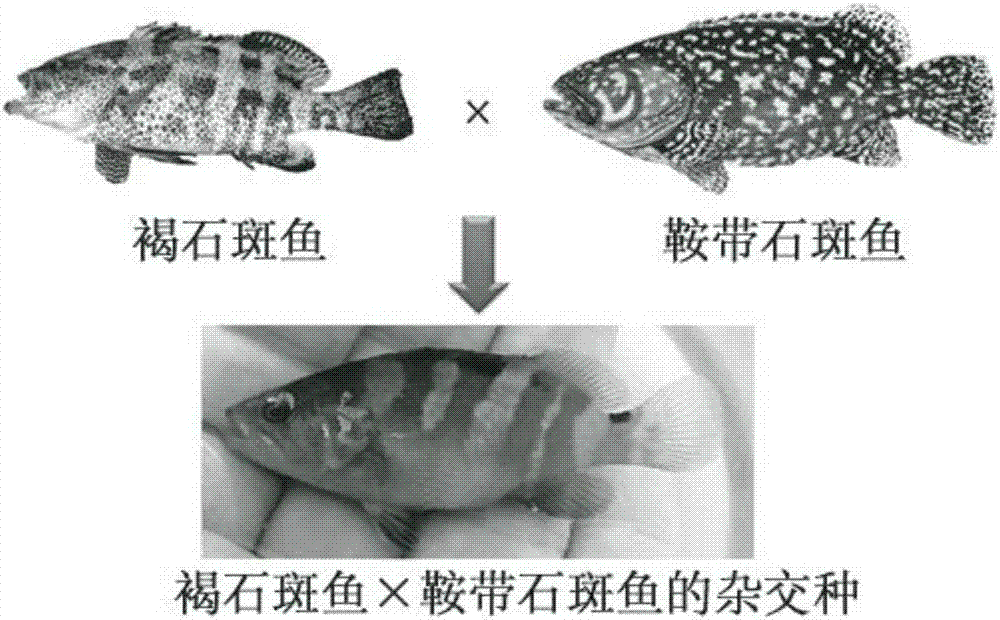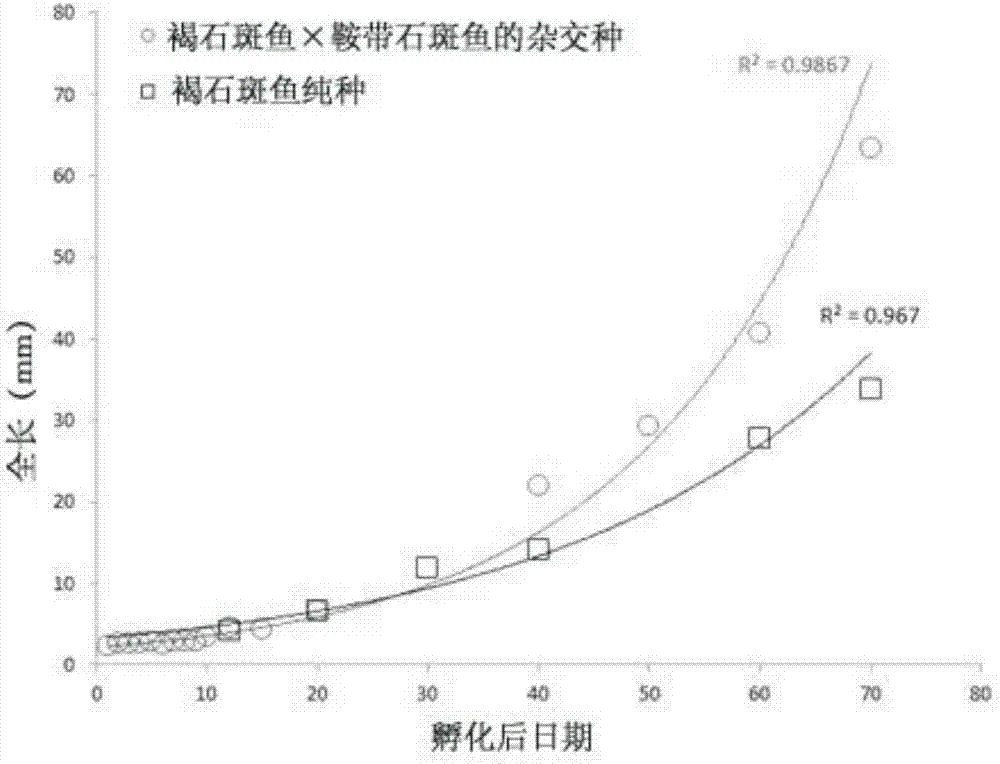Hybrid between longtooth grouper Epinephelus bruneus and giant grouper Epinephelus lanceolatus and a hybridization method thereof
A kind of saddle grouper, production method technology, applied in fish farming, application, climate change adaptation and other directions, can solve the problem of not realizing hybridization with subtropical sushi, and achieve the effect of improving national competitiveness
- Summary
- Abstract
- Description
- Claims
- Application Information
AI Technical Summary
Problems solved by technology
Method used
Image
Examples
Embodiment 1
[0045] Example 1. Ensuring of broodstock
[0046] In the present invention, as the brown grouper, a mature female brown grouper collected near Jeju, Korea and domesticated in a broodstock breeding tank with a body weight of 1.5 to 5.2 kg was used. , matured male grouper with a body weight of 54.2-112.0 kg imported from Taiwan and being domesticated in a broodstock breeding tank was used.
Embodiment 2
[0047] Example 2. Hybridization
[0048] Hybridization was carried out by artificial insemination using the dry method after extracting eggs and semen from mature female brown grouper and male saddle grouper by abdominal compression method.
[0049] First, in order to obtain high-quality mature eggs of mature female brown grouper, after observing the abdomen, the state of maturity was checked while touching with hands.
[0050] 25 μg / kg of luteinizing hormone-releasing hormone (LHRH) (Sigma, USA) and 1000 IU / kg of human chorionic gonadotropin (HCG) were intraperitoneally injected into the maturing female brown grouper.
[0051] From 36 hours after the injection, the mature eggs were checked by hand at intervals of 4 hours, and finally, the mature eggs were secured by compressing the abdomen.
[0052] Semen was extracted from male saddle grouper using abdominal compression.
[0053] It is necessary to prevent the ensured mature eggs from being exposed at room temperature for ...
Embodiment 3
[0057] Embodiment 3. Hatching and raising
[0058] Hatching and rearing of larvae were performed in the same manner in the hatching tank.
[0059] The results of the hatching experiment showed that all hatchings were carried out at the water temperature of the hatch tank up to 22-31°C, but the hatching rates at 22°C and 31°C were lower than those at 25°C and 28°C.
[0060] The survival rate of yolk-absorbed larvae showed high values in the 25°C and 28°C experimental groups, but did not survive in the 22°C and 31°C experimental groups ( figure 1 ).
[0061] The results of the analysis of the deformity rate of hatched larvae show that at a temperature of 25°C, there is a deformity rate of 1.5%, while at a temperature of 28°C, the deformity rate is as high as 15.5%. It is 23.5-26.5°C.
[0062] Rotifers (rotifers) were fed from 2 days after hatching.
[0063] As the larvae grow, a compound feed is provided together with the Artemia larvae. The rearing water used filtered se...
PUM
 Login to View More
Login to View More Abstract
Description
Claims
Application Information
 Login to View More
Login to View More - Generate Ideas
- Intellectual Property
- Life Sciences
- Materials
- Tech Scout
- Unparalleled Data Quality
- Higher Quality Content
- 60% Fewer Hallucinations
Browse by: Latest US Patents, China's latest patents, Technical Efficacy Thesaurus, Application Domain, Technology Topic, Popular Technical Reports.
© 2025 PatSnap. All rights reserved.Legal|Privacy policy|Modern Slavery Act Transparency Statement|Sitemap|About US| Contact US: help@patsnap.com



